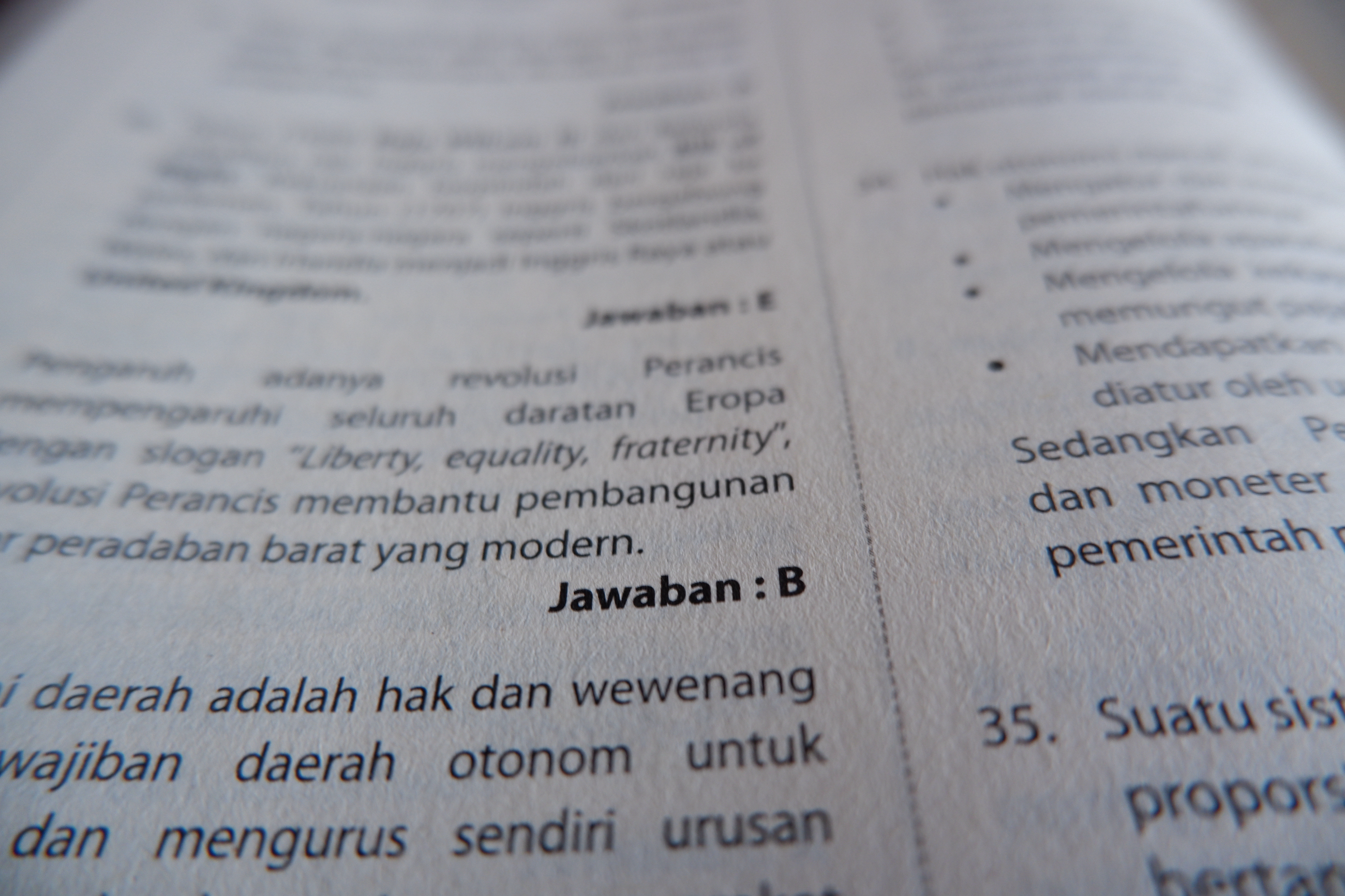
Indonesian matters in our schools

Australia needs leadership and investment in Indonesian language education, so the next generation of young Australians might know our largest neighbour better
Published 9 December 2021
Let’s be honest, Indonesian language studies in our schools have plummeted in the last decade. Just 755 students now graduate high school speaking Indonesian across all of Australia. That’s half the number compared to a decade ago.
This should be of great concern to all Australians as Indonesia is our largest neighbour and a rising economic and strategic power in our region. Indonesia is a young, dynamic, tech savvy, creative country that has much to offer Australia. And it’s on our doorstep.

Knowing your neighbours just makes sense. That’s why we at the Asia Education Foundation recently launched our rationale – ‘Why Indonesia matters in our schools’.
This decline in Australia’s capacity to speak with our neighbour demands action from those working in education policy and leadership.
Small interventions will no longer be good enough. Indonesian has been part of the Australian school curriculum for nearly 70 years with a rapid decline at the secondary level over the past 15 years. While Indonesian is still taught in some primary schools, in some states we’ve nearly run out of pathways into secondary.

Why has Indonesian declined year on year?
Dr Michelle Kohler, who works in applied linguistics and languages education at the University of South Australia says “in the absence of a specific language in education policy, bureaucrats and school leaders have turned to curriculum policy for guidance. The reliance on curriculum policy is however problematic, as it cannot address the values proposition and matters pertaining to program conditions, staffing, teacher training and resourcing.”
So, now what? This question is understandable given the history, context and constraints of Indonesian language and studies in Australian schools.
I believe the best approach is a ‘top down and bottom up’ strategy.

First, we need leadership and investment in Indonesian language and studies from the Australian Government. Investment that generates a new stream of educators equipped to teach Indonesian, supported by contemporary and relevant resources alongside school programs.
Only national leadership and national funding can achieve the scale of change required.
We need a strong cohort of the next generation of young Australians knowing our largest neighbour and who are able to work with Indonesians to resolve the big issues of our times like climate change, pandemics, security and sustainability.

Education
The world is a classroom
Students in one or two states knowing Indonesian just isn’t enough.
In 2022, we will need action on the pending findings of the Australian Federation of Modern Language Teachers’ Associations who are developing current research into languages education in Australia. We should expect that our Federal Minister for Education will adopt key recommendations if Australia is serious about a world class education.
And we need to look outside the box.
If the Government can bring Indonesians to Australia to support agriculture, then we could do the same with the workforce challenges in teaching Indonesian. This means supporting skilled migration, working with key authorities on recognition of qualifications and supplying visas.

As an additional option, Asia Education Foundation’s Indonesian Language Learning Ambassadors initiative could link Australia Awards Indonesia participants into schools seeking native Indonesian speakers.
Between 2017 and 2019, this program showed very positive feedback on its impact. Indonesia has the fourth largest education system in the world and should be seen as an opportunity to build better learning together.
The second part of a national strategy would support schools who teach Indonesian and integrate studies of Indonesia to build a network across Australia to share expertise, teaching resources and even opportunities for their students to practice the language.

There are rich and powerful examples of schools across Australia, like Camperdown College or St. Mary’s College Seymour, that could amplify their impact through the support of networks. A national teacher’s association for Indonesian would be a great move and has been advocated by leading educators for years.
It would also be helpful if the Australian Curriculum, Assessment and Reporting Authority could energise their work on ‘Asia and Australia’s Engagement with Asia’ with a focus on Indonesia for the release of the revised Australian Curriculum due in 2022.
Finally, we must work with our young people on why Indonesia matters.
Our rationale aims to provide Australian school leaders with a compelling reason for why knowing Indonesia helps us achieve Australia’s national education goals and strengthens intercultural learning for young people in our part of the world.

We must engage our young people in national discussions that get to the heart of their aspirations for knowing our neighbours and help them break down the barriers they know are holding them back.
Students at Scotts Head Public School and nearby Macksville High School in New South Wales are already developing those youth perspectives. Macksville High is now seeing a group of students complete their Indonesian HSC a full year early after studying the language from primary school.
There are other bright spots on the horizon.

Arts & Culture
How women are changing Indonesia
University networks are working on a national communications plan to promote languages to young people to leverage recent changes to funding models that makes it cheaper to study a language at university. This plan involves the work of the Languages and Cultures Network for Australian Universities in partnership with the Australian Consortium for ‘In-Country’ Indonesian Studies.
A national campaign will hopefully speak to young Australians who see value in learning a second language that supports their careers, their communication skills and the many strengths of being bilingual. However, cheaper doesn’t necessarily make language learning more compelling – purpose and opportunities count for a great deal with our young people as well.
We need to circle back to knowledge, skills and attitudes around intercultural learning. Languages can’t achieve intercultural understanding alone.

We need to promote and ensure that all young Australians develop some knowledge and understanding of Indonesia – providing opportunities to forge friendships across our borders, developing partnerships, empathy and respect.
Coming out of the pandemic, the world cannot afford to build more walls. That’s why the Asia Education Foundation is building bridges and continuing to grow its longest running BRIDGE School Partnerships Program with Indonesia.
So, now what? While these opportunities for Indonesian language and studies are realistic, they require our leaders to step up.
Education can overcome all boundaries, even the ones we create ourselves.
Banner: Getty Images
